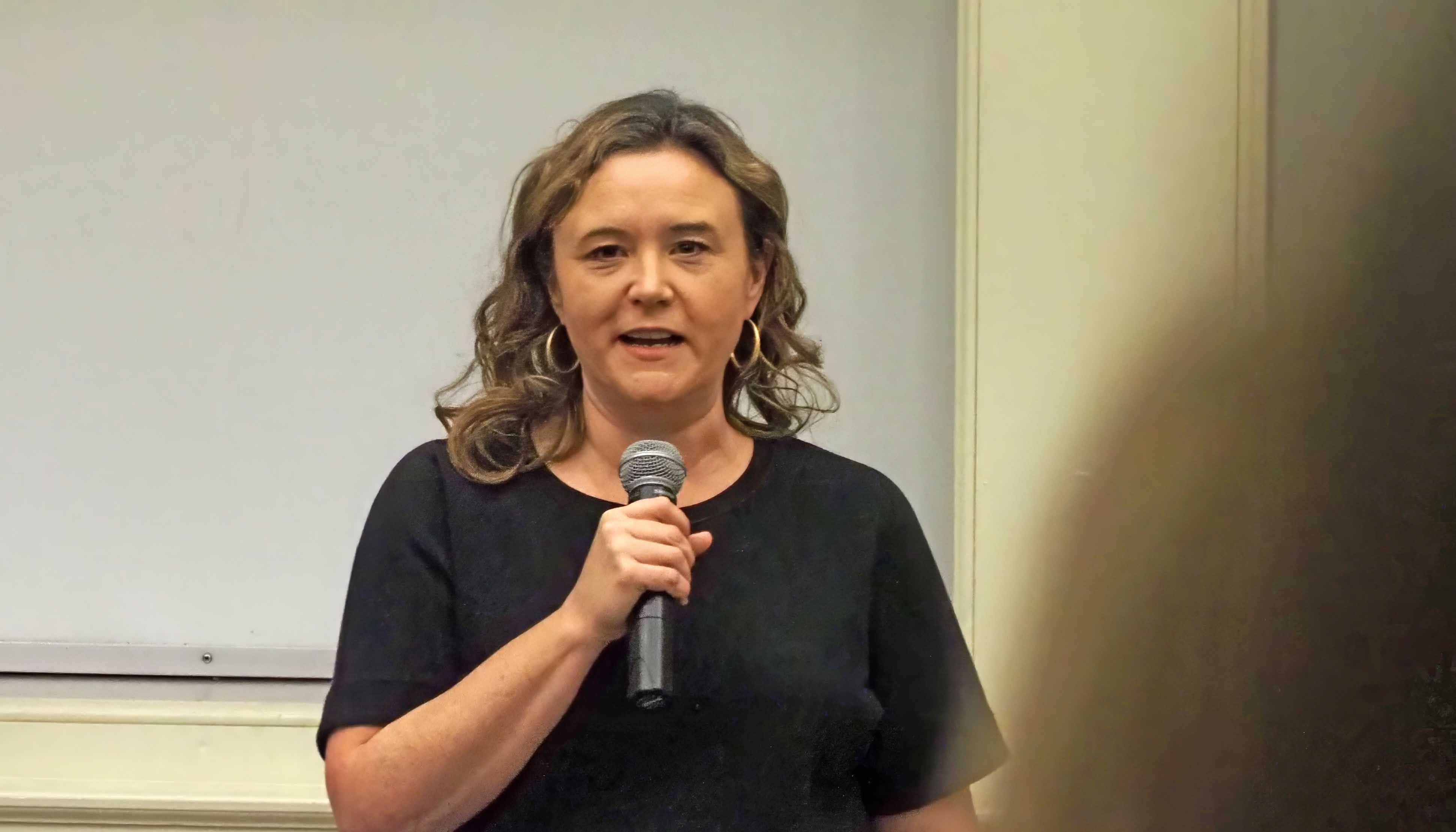FSB professor explores the potential of mutual mentorship in the workplace
The word "mentoring" will often infer a transfer of information and knowledge from an older employee to a younger one. But what if the mentoring went both ways?

FSB professor explores the potential of mutual mentorship in the workplace
When it comes to the concept of mentorships in the business world, Farmer School of Business Management professor Megan Gerhardt is not shy about singing the praises.
“From a human resources standpoint, one of the things we know is mentorship is one of the very best ways to help people feel included, to help people feel valued, to feel like they're being developed,” she said.
But while the first thing that may come to mind when thinking “mentorship” is likely an older, more experienced person mentoring a younger, inexperienced person, Gerhardt told students and professionals at her Society for Human Resource Management talk that many of her mentors aren’t even as old as she is. “I would say at least two-thirds of my mentors are probably younger than me.”
Gerhardt used that concept as an introduction to mutual mentorship, a learning relationship where both people taking part act as both mentor and mentee to each other, sharing knowledge and skills in two directions instead of a more conventional top-down model.
“We've navigated our way to a period in time that requires us to have a new outlook and be shaped by different things. Those of us who are older in the workplace, we have our norms and our ways of doing things, and anytime the new generation comes in and wants to do something different, that's uncomfortable. We end up in this very interesting kind of tug of war where it becomes us versus them,” Gerhardt said. “I think mutual mentorship is a tool that we recommend often to learn how we break that down and get to the point where the fact that we see things differently is an advantage and not a threat.”
Gerhardt noted that creating a mentorship takes work because most people work directly with people around their own age, which can lead to a form of age polarization where a given generation of workers looks down upon other generations that they don’t understand well because they don’t interact. But now, she said, there are members of five generations in the workforce.
“We have decades of experience and expertise that are staying longer in our organizations. We can continue to leverage that. It's also a challenge because we have people in different parts of the pipeline who maybe feel like they're not progressing at the speed they thought they were going to because the job they thought they were going to get is still being held by someone older,” Gerhardt said.
As an example of cross generational mentorship, she used the example of her book, “Gentelligence,” which had two co-authors – both former students of hers. “I had just asked them to jump in and be sort of assistants with me. And they were so valuable, and their perspectives were so interesting, that I immediately said, ‘No, this should be a three-author project,’” Gerhardt said. “So, I practice what I preach. I really do learn a lot from people older than me, but also people younger than me all the time.”
Gerhardt said that mutual mentoring has the power to connect generations in the workplace.
“The reality of life is there are people younger than you, and pretty soon they're going to work for you. People in Gen Alpha are going to be your employees before you know it. So have you ever asked somebody a lot younger than you, even if you're a Gen Z student, what they think?” she said. “I would love to give you a challenge around the idea that really what we want to do is foster that opportunity to keep that door open in both directions.”